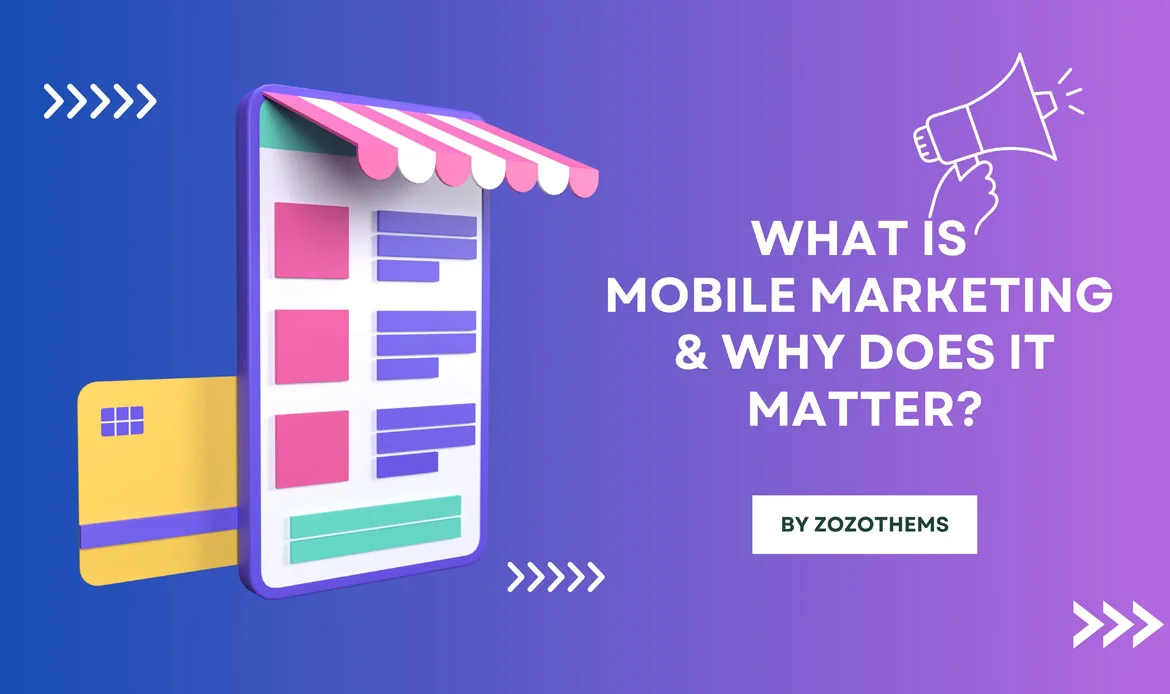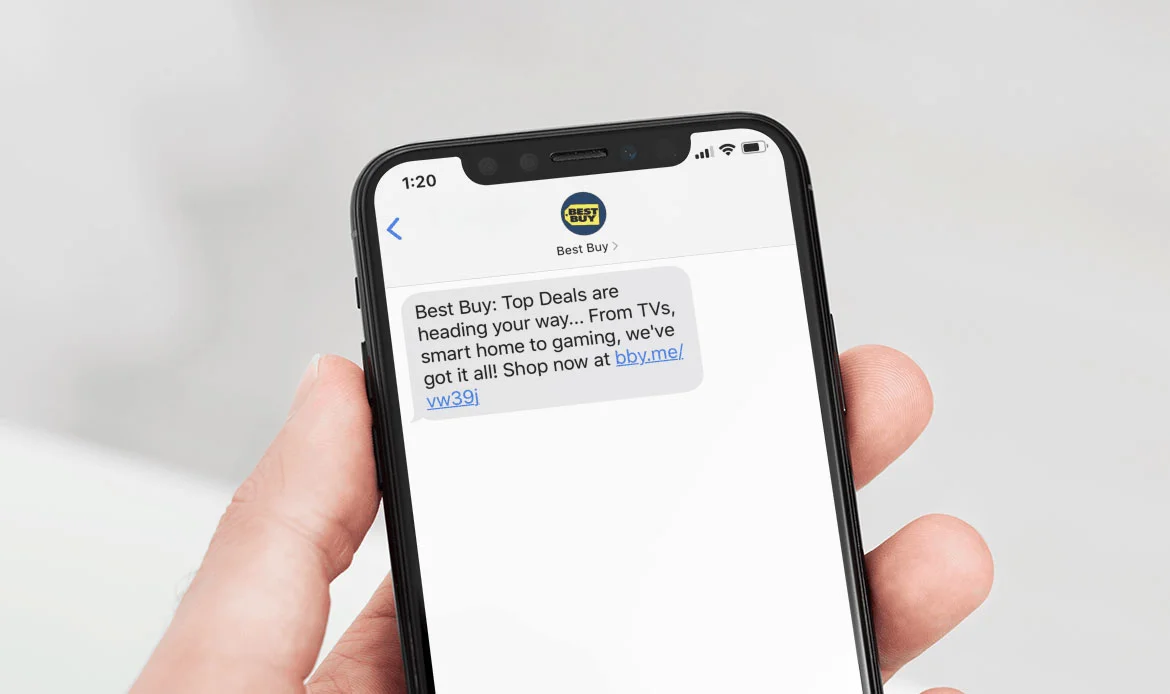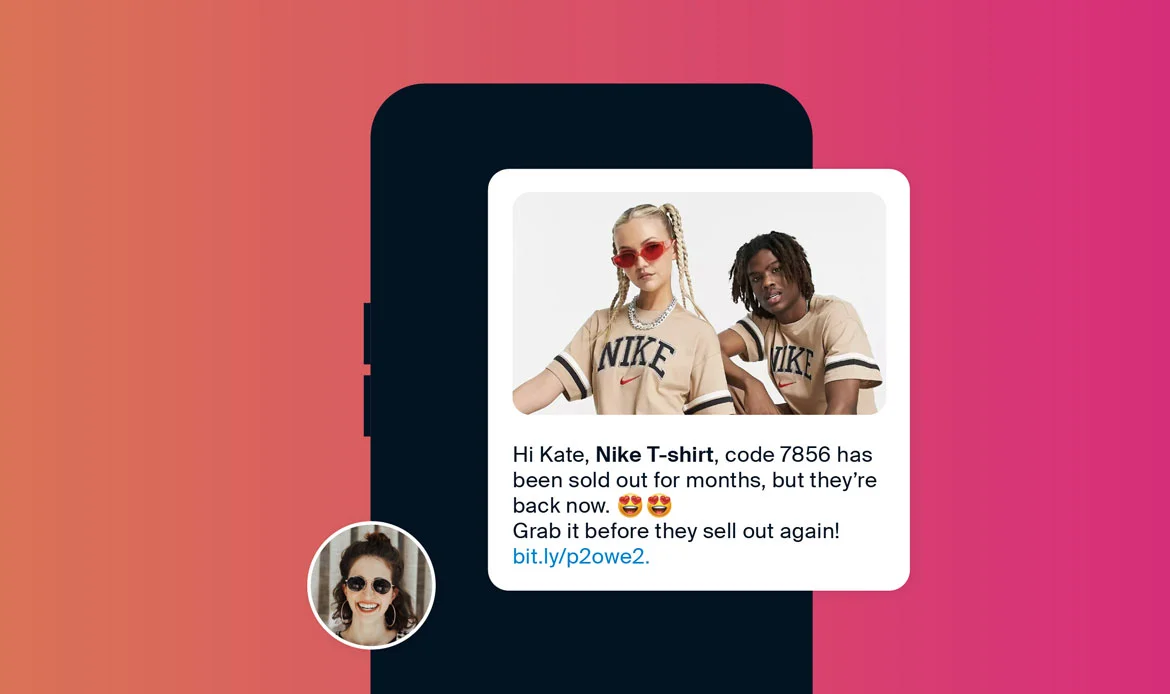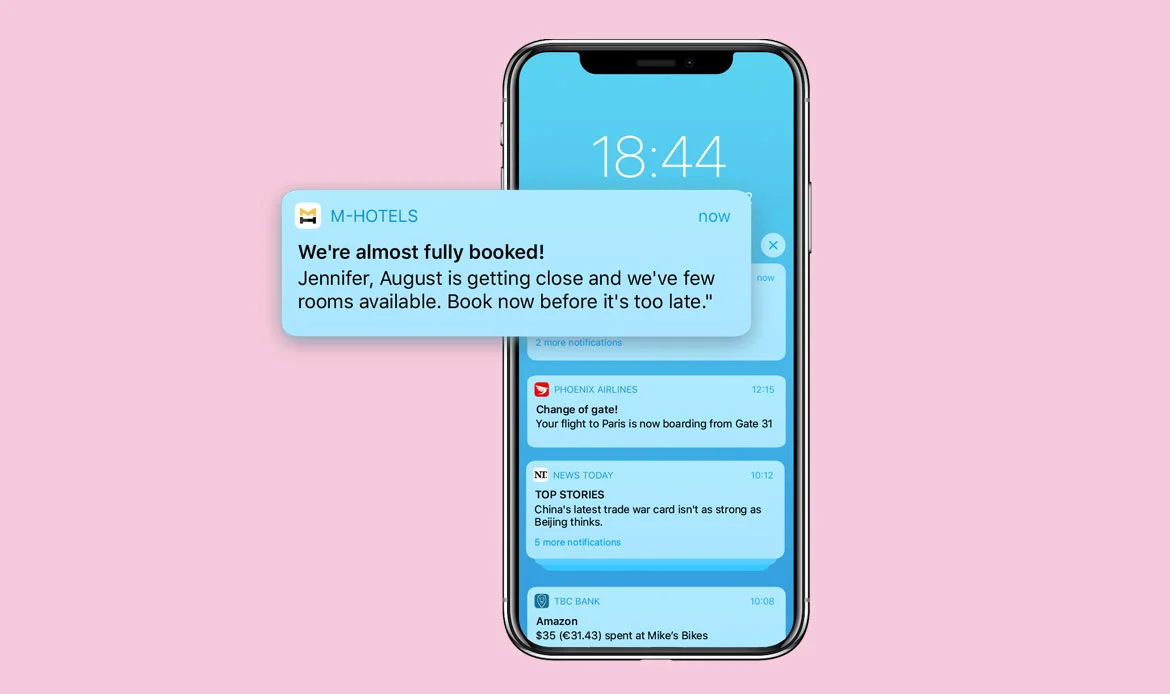‘What is mobile marketing?’ Get the answers and understand its significance in our comprehensive guide. Learn the latest trends and strategies to elevate your marketing efforts in the mobile era.
In an age where digital connectivity is synonymous with daily life, businesses navigate a landscape that is constantly evolving. One phenomenon that stands at the forefront of this transformation is mobile marketing. As consumers increasingly turn to their smartphones for information, entertainment, and commerce, understanding the intricacies of mobile marketing has become pivotal for any forward-thinking business.
This article aims to unravel the mysteries of mobile marketing, providing a comprehensive exploration of its definition, evolution, and, most importantly, its significance in the contemporary business ecosystem. From the humble origins of SMS campaigns to the cutting-edge applications of augmented reality and 5G technology, we will journey through the various facets of mobile marketing, shedding light on why it has become an indispensable tool for brands striving to thrive in a digitally connected world.
Join us as we delve into the world of mobile marketing, uncovering the key trends, strategies, and ethical considerations that make it a powerful force in the realm of modern marketing. Whether you’re a seasoned marketer looking to refine your mobile approach or a business owner aiming to understand the essentials, this exploration into “What Is Mobile Marketing & Why Does it Matter?” promises insights that are both enlightening and actionable. Welcome to the intersection of innovation and marketing effectiveness – the world of mobile marketing.
How Does Mobile Marketing Work?
Mobile marketing operates through various channels and strategies to engage with users on their mobile devices. Here’s a breakdown of how mobile marketing works:
Understanding the Target Audience
Mobile marketing starts with knowing who your users are — their habits, interests, age group, and device usage patterns. When you understand your audience, you can tailor messages, visuals, and offers that truly connect. This insight helps in creating relevant campaigns that increase engagement and conversion rates. Mobile marketing begins with a thorough understanding of the target audience. Marketers use demographic data, user behaviors, and other insights to create a profile of their ideal mobile user.
Mobile-Optimized Content
Creating mobile-friendly content ensures users have a smooth experience, no matter the screen size. Text should be concise, visuals optimized for speed, and buttons easy to tap. Mobile-optimized content improves readability, keeps users on your site longer, and positively affects SEO rankings. Content, including websites, emails, and advertisements, is optimized for mobile devices. This ensures that users have a positive experience when interacting with a brand’s content on their
smartphones or tablets.
Mobile Apps
A dedicated mobile app strengthens brand loyalty and convenience. Apps allow personalized experiences, push notifications, and faster interactions. They also provide valuable data on user behavior, enabling continuous improvement in customer engagement and satisfaction. Brands may develop mobile applications to provide users with a more interactive and personalized experience. Apps can be used for various purposes, such as e-commerce, customer loyalty programs, or content consumption.
SMS and MMS Marketing
SMS (Short Message Service) and MMS (Multimedia Messaging Service) marketing are direct, instant, and highly effective. These messages reach users immediately and boast some of the highest open rates in digital marketing. They’re perfect for promotions, reminders, or quick updates. This form of direct communication is often employed for promotions, updates, or time-sensitive information.
Push Notifications
Push notifications keep users engaged with real-time alerts—whether for sales, news, or personalized recommendations. When used wisely, they boost re-engagement without feeling intrusive. Timely and relevant notifications encourage users to return and interact more frequently. For users who have installed a brand’s mobile app, push notifications can be sent to their devices even when the app is not actively in use. This feature helps in re-engaging users and delivering timely updates or promotions.
Social Media Marketing on Mobile Platforms
Most social media users access platforms via mobile. Mobile-based social media marketing ensures content is designed for scrolling, tapping, and sharing. By optimizing visuals and calls-to-action for mobile, brands can increase reach, engagement, and follower loyalty. Given the prevalence of social media usage on mobile devices, mobile marketing extends to platforms like Facebook, Instagram, Twitter, and others. Brands create mobile-optimized content and advertisements to connect with their audience on these platforms.
Location-Based Marketing
Location-based marketing uses GPS data to target customers based on their physical location. Businesses can send localized offers or messages, such as promoting a nearby store or special event. This approach increases relevance and drives in-person visits. Mobile devices often have GPS capabilities, allowing marketers to leverage location data for targeted campaigns. Location-based marketing delivers content or offers based on the user’s current geographic location.
Mobile Advertising
Mobile ads come in many forms — banner ads, in-app ads, video ads, and more. They are cost-effective and can be precisely targeted using user data and preferences. Successful mobile advertising balances creativity with usability to attract attention without disrupting the user experience. Brands utilize various forms of mobile advertising, including display ads, in-app ads, and mobile search ads. These advertisements are strategically placed to capture the attention of mobile users and drive them to take specific actions.
Analyzing Data and Metrics
Analyzing data and metrics is the backbone of effective mobile marketing. By tracking performance indicators such as click-through rates, app downloads, user retention, and engagement levels, businesses can identify what’s working—and what isn’t. Data-driven insights allow marketers to fine-tune campaigns, allocate budgets efficiently, and deliver more personalized user experiences. Regular analysis not only boosts ROI but also helps predict future trends, ensuring your mobile marketing strategy stays agile and results-focused.
Adapting to Technological Advances
The mobile landscape evolves rapidly. From AI-driven personalization to 5G-powered experiences, staying updated with new technologies ensures brands remain competitive. Continuous adaptation allows businesses to use cutting-edge tools that enhance performance, engagement, and customer satisfaction. Marketers must stay abreast of technological advancements and changes in user behavior to adapt their strategies. This may involve incorporating emerging technologies such as augmented reality or integrating new features into mobile apps.
In essence, mobile marketing works by meeting users where they are on their mobile devices and delivering tailored, relevant content through various channels to create meaningful interactions and drive desired outcomes for the brand.
The Significance of Mobile Marketing
Ubiquity of Mobile Devices
The widespread adoption of smartphones has made them an omnipresent tool in people’s lives. Mobile devices are carried everywhere, providing marketers with a direct channel to connect with consumers at any time and place.
Shift in Consumer Behavior:
Consumers increasingly rely on their mobile devices for information, communication, and online activities. Mobile marketing allows brands to adapt to changing consumer behaviors and be present where their audience is most active.
Personalization and Targeting:
Mobile marketing enables highly targeted and personalized campaigns. Marketers can leverage data analytics and user insights to tailor messages and offers based on individual preferences, behaviors, and demographics.
Instant Connectivity:
Through mobile marketing channels like SMS or push notifications, brands can establish instant and direct communication with their audience. This immediacy is crucial for time-sensitive promotions, announcements, or engagement.
Enhanced User Experience:
Mobile-optimized websites and apps contribute to a seamless and enjoyable user experience. A positive interaction fosters brand loyalty and encourages repeat business.
Key components of mobile marketing include
- SMS (Short Message Service)
- MMS (Multimedia Messaging Service)
- Push notifications
- App-based marketing
- Social Media Marketing on Mobile Platforms
- Mobile Advertising
- QR Codes and Augmented Reality (AR)
- In-game mobile marketing
- Bluetooth
- Proximity systems
- Location-based services
SMS (Short Message Service)
Using text messages to send promotional content, alerts, or other information directly to a user’s mobile device.
Implementation: Obtain user consent for SMS communication. Use SMS for targeted promotions, alerts, or time-sensitive information. Keep messages concise and relevant to encourage user interaction.
MMS (Multimedia Messaging Service)
Similar to SMS but with the ability to include multimedia content such as images, videos, or audio.
Implementation: Similar to SMS, obtain user consent. Send messages that include images, videos, or audio to convey more information and create visually appealing promotions.
Mobile-Optimized Websites
Ensuring that websites are designed to be easily navigated and viewed on mobile devices, with responsive design elements for varying screen sizes.
Implementation: Design websites with a responsive layout that adapts to different screen sizes. Optimize images, buttons, and text for mobile viewing. Test the website across various devices to ensure a seamless user experience.
Push Notifications
Sending messages or alerts to users who have installed a brand’s app, even if the app is not currently in use.
Implementation: Encourage users to opt-in for push notifications. Send timely and relevant messages, such as promotions, updates, or personalized content, to keep users connected with your brand.
App-based marketing
Developing and promoting applications designed specifically for mobile devices, providing users with a more interactive and tailored experience.
Implementation: Identify the purpose of the app, whether it’s for e-commerce, content consumption, or brand engagement. Design a user-friendly interface and incorporate features that add value. Promote the app through various channels to encourage downloads.
Social Media Marketing on Mobile Platforms
Leveraging social media channels that are commonly accessed via mobile devices to connect with audiences through mobile-optimized content and ads.
Implementation: Create mobile-optimized content for platforms like Facebook, Instagram, and Twitter. Use targeted ads, engaging visuals, and interactive features to foster user interaction and build a community around your brand.
Mobile Advertising
Placing ads on mobile devices through various channels, including social media, search engines, and in-app advertising.
Implementation: Invest in mobile advertising through platforms like Google Ads, social media, or in-app advertising. Use mobile-specific ad formats and creative content to maximize engagement and reach a broader audience.
QR Codes and Augmented Reality (AR)
Integrating QR codes and AR technologies to create interactive and engaging mobile experiences.
Implementation: Incorporate QR codes on promotional materials to provide quick access to mobile content. Explore augmented reality to create immersive experiences that blend the digital and physical worlds, encouraging user interaction and participation.
In-Game Mobile Marketing
Advertise within mobile games to reach a captive and engaged audience.
Implementation: Partner with game developers or use in-app advertising to display branded content, video ads, or sponsored challenges within mobile games. This strategy leverages the immersive nature of gaming to capture users’ attention and create memorable brand experiences.
Bluetooth Marketing
Utilize Bluetooth technology for proximity-based marketing.
Implementation: Deploy Bluetooth beacons in physical locations such as retail stores or event venues. When users with Bluetooth-enabled devices enter the beacon’s range, they can receive location-specific content, offers, or notifications. This strategy is effective for delivering contextually relevant information to users in specific locations.
Proximity Systems
Engage users based on their proximity to specific locations or objects.
Implementation: Use various technologies like NFC (Near Field Communication), RFID (Radio-Frequency Identification), or beacons to trigger interactions when a user’s device is in close proximity. For instance, a retail store might use NFC tags to provide product information when a user taps their phone near a tagged item.
Mobile Commerce (mCommerce):
Facilitate seamless mobile transactions for users.
Implementation: Optimize e-commerce platforms for mobile users, simplify the checkout process, and ensure secure payment options.
Location-Based Marketing
Utilizing the location data of mobile users to deliver targeted and location-specific content or offers.
Implementation: Utilize the location data of mobile users to provide location-specific promotions, information, or services. Tailor marketing messages to suit the user’s current context and enhance relevance.
Each of these strategies taps into the unique capabilities of mobile devices to deliver targeted and engaging marketing experiences. By understanding and implementing these approaches, businesses can enhance their mobile marketing efforts, create meaningful interactions with users, and drive positive outcomes for their brands.
Frequently Asked Questions
Is mobile marketing suitable for all types of businesses?
Yes, mobile marketing is suitable for a wide range of businesses, regardless of their size or industry. As mobile devices become integral to people’s daily lives, businesses can benefit from reaching their target audience through personalized and location-based mobile marketing strategies.
Why is mobile advertising important?
Mobile advertising is crucial because it allows businesses to reach a wide audience on their mobile devices. With the increasing use of mobile apps and social media on smartphones, mobile advertising provides an effective way to promote products or services, drive brand awareness, and engage users.
How does location-based marketing work?
Location-based marketing utilizes the location data of mobile users to deliver targeted and location-specific content or offers. Businesses can use this information to send relevant promotions, notifications, or information based on the user’s geographic location, creating a more personalized experience.
What role do mobile apps play in mobile marketing?
Mobile apps provide businesses with a platform to offer a more interactive and personalized experience to users. They can be used for various purposes, including e-commerce, content delivery, and brand engagement. Mobile apps also enable businesses to send push notifications to users, keeping them engaged even when the app is not in use.
How can businesses optimize their websites for mobile devices?
To optimize websites for mobile devices, businesses should implement responsive design, ensure fast loading times, simplify navigation, and optimize images and content for smaller screens. This ensures a positive user experience for visitors accessing the website on mobile devices.
Conclusion
In the dynamic landscape of digital marketing, where consumer behaviors evolve at the speed of technology, understanding the essence of mobile marketing emerges as a strategic imperative. As we conclude our exploration into “Mobile Marketing & Why Does it Matter?” it becomes evident that mobile marketing is not merely a trend but a fundamental shift in how businesses connect with their audiences.
From the inception of short text messages to the immersive experiences enabled by augmented reality, mobile marketing has proven its adaptability and effectiveness. The key lies in its ability to meet consumers where they are—on their mobile devices, in the palm of their hands. This isn’t just about convenience; it’s about relevance.
Elevate Your Brand with Smart Mobile Marketing
In today’s hyper-connected world, mobile marketing isn’t just an option—it’s essential. With consumers spending more time on their smartphones than ever before, reaching your audience through mobile channels creates a direct and personal connection.








